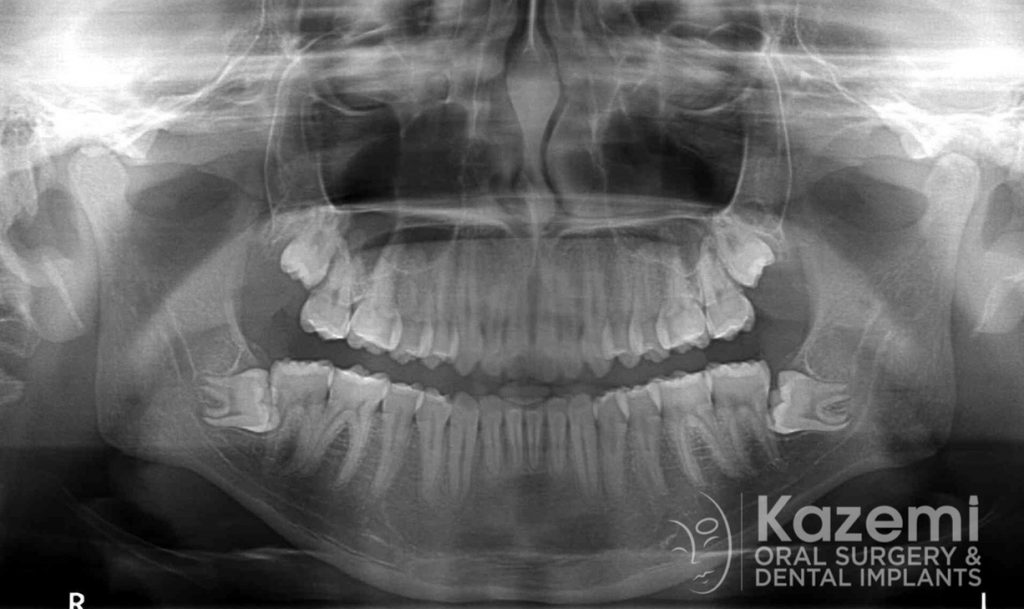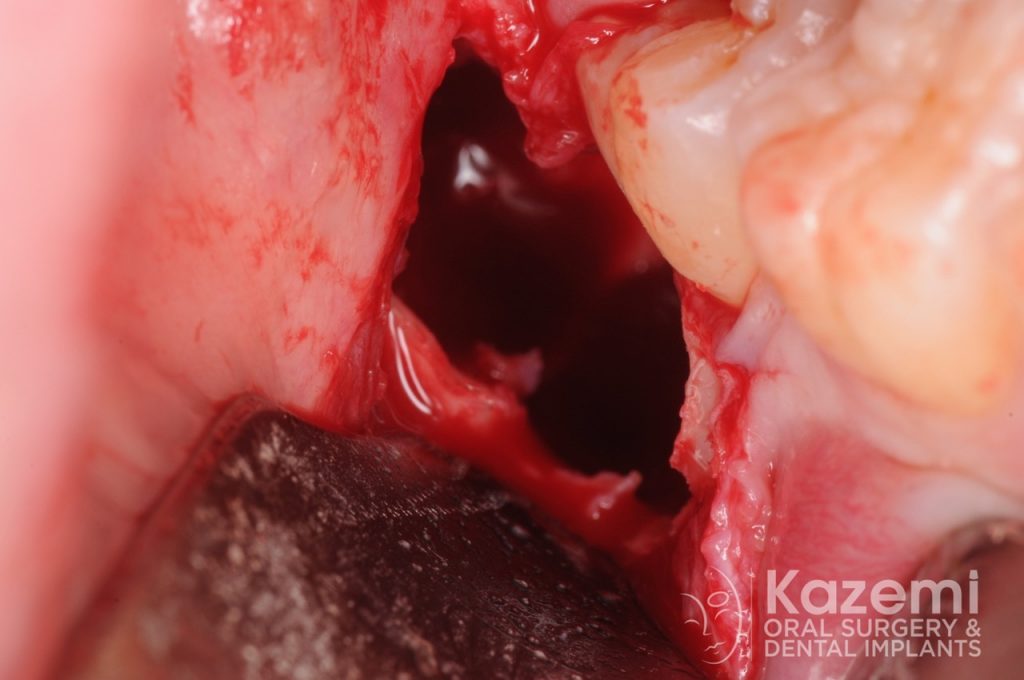During wisdom teeth extraction, bone grafting may be indicated if there is significant bone loss due to infection, cysts, gum disease, or proximity of the wisdom tooth to the second molar. Bone graft is best performed at the same time as the extraction, allowing guided regeneration of bone where needed. Bone graft materials most often used are freeze-dried human bone, bovine bone, or synthetic bone in the form of calcified granules in pre-packed bottles. These materials are very safe with no concerns for disease transmission. Once placed, the bone graft material is covered with a re-absorbable membrane that protects it and allows it to mature into actual bone over four to six months. Bone grafting may be indicated in the following situations.
- Bone loss due to gum disease: This occurs commonly with long-standing wisdom teeth. The defect that results adversely affects the second molar as the teeth share the same bone for support.
- Bone loss due to cysts: As cysts grow, they destroy surrounding bone. Once the tooth is extracted and the cyst is removed, the defect may be grafted to restore lost bone, allowing a more complete bony healing, and providing better bony support to the adjacent tooth.
- Bone loss due to wisdom tooth proximity: Bone may be very thin in the presence of severely horizontally impacted wisdom teeth where the crown is in intimate contact with roots of the adjacent teeth. Without bone grafting, chronic pocketing (periodontal defect) can develop, resulting in inflammation of the gum tissue, pain, bleeding, and gradual loss of bone.
Patient with horizontally impacted lower third molar. Although this is a 2-dimensional radiograph, it is not unusual to have bone deficiency behind the second molars following removal of the impacted wisdom teeth. The bone deficiency is both due to the wisdom teeth’s close proximity to the second molars as well as surgical removal of the bone over the wisdom teeth for access during extraction.

This photos shows the anticipated bony defect after removal of the impacted wisdom tooth. The site was grafted to restore bone behind the second molar and provide sufficient periodontal support (bone and gum tissue) and prevent risk of periodontal disease (pockets behind the the second molar)
